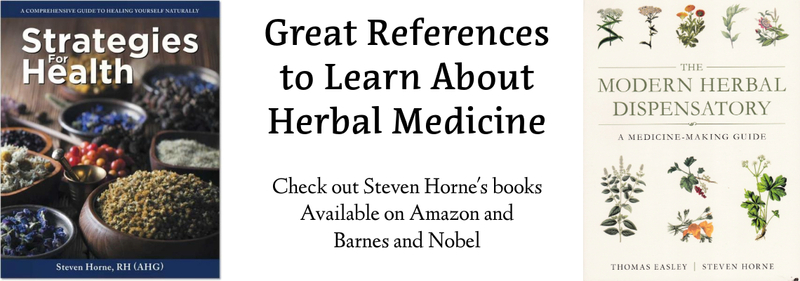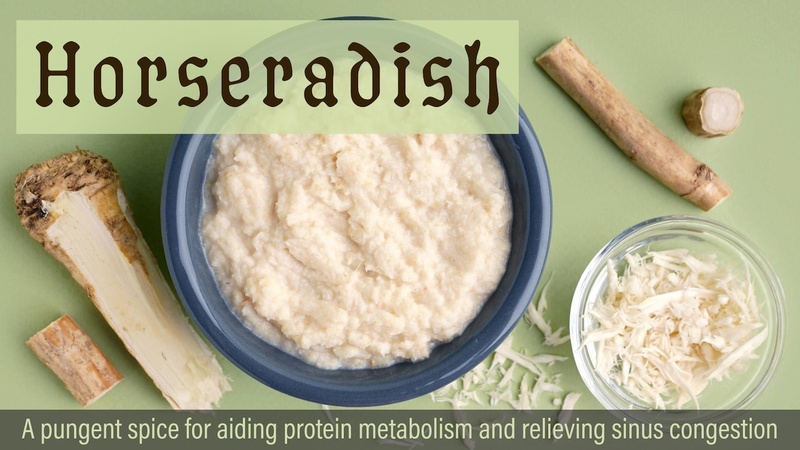
Horseradish (Armoracia rusticana) is a plant in the mustard family. I’ve written about mustard family plants before, including mustard seeds and wild spring mustard plants. Like other plants in this family, horseradish contains a significant amount of sulfur compounds. This mineral is the third most abundant mineral in the human body and the fourth most important mineral for plant growth. These sulfur compounds give plants like horseradish their pungent flavor.
Protein Digestion and Metabolism
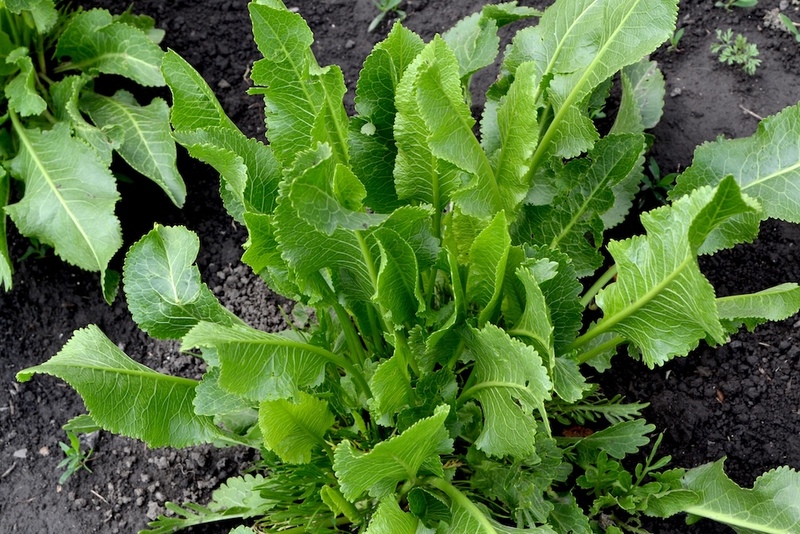 One of the most valuable benefits of horseradish is its ability to help the body digest and metabolize protein. I’ve always had a harder time digesting meat, especially red meats like beef and lamb. Horseradish or mustard is very helpful for me when eating these types of meats, especially if they’re on the fatty side. It helps my body break down these heavy protein foods faster, so they don’t sit on my stomach for a long time. As I understand it, they also help to accelerate protein metabolism in the body, helping me utilize the protein more efficiently once it is digested.
One of the most valuable benefits of horseradish is its ability to help the body digest and metabolize protein. I’ve always had a harder time digesting meat, especially red meats like beef and lamb. Horseradish or mustard is very helpful for me when eating these types of meats, especially if they’re on the fatty side. It helps my body break down these heavy protein foods faster, so they don’t sit on my stomach for a long time. As I understand it, they also help to accelerate protein metabolism in the body, helping me utilize the protein more efficiently once it is digested.
My favorite way to utilize this property of horseradish is not to eat it straight, but to add it to coleslaw and eat the cabbage salad with the meat. Cabbage is also in the mustard family and helps to digest protein foods. The instructions for making my horseradish coleslaw are found in my article on cabbage.
Relieving Respiratory Congestion
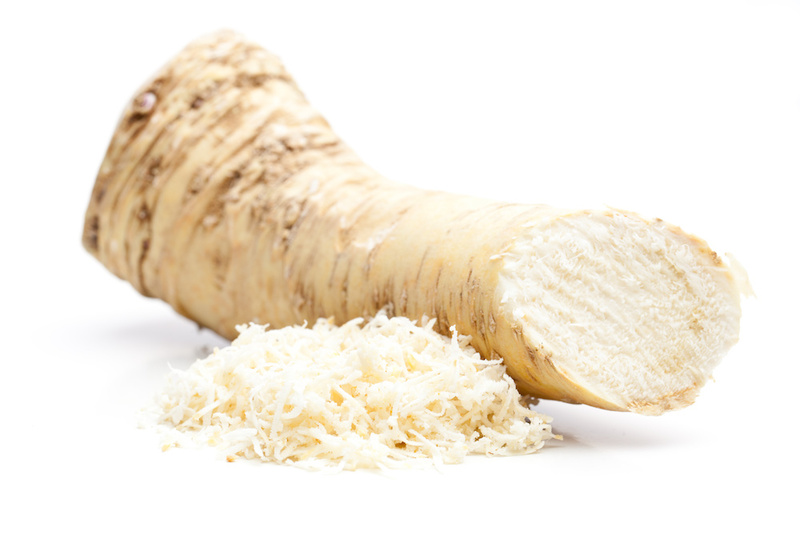 Sulfur-rich plants also tend to act as decongestants to loosen mucus and help fight respiratory tract infections. Garlic, from the lily family, is my favorite sulfur-rich herb for decongesting the lungs, but horseradish is my favorite for decongesting the sinuses. Wasabi (Wasabia japonica) has similar properties. Horseradish is often used to bulk out or replace wasabi as a condiment.
Sulfur-rich plants also tend to act as decongestants to loosen mucus and help fight respiratory tract infections. Garlic, from the lily family, is my favorite sulfur-rich herb for decongesting the lungs, but horseradish is my favorite for decongesting the sinuses. Wasabi (Wasabia japonica) has similar properties. Horseradish is often used to bulk out or replace wasabi as a condiment.
If you’ve ever had horseradish with prime rib and wasabi with sushi and eaten just a little too much, you’ll readily see how both of these plants stimulate the sinuses to rapidly clear them. They help the lungs, too, but the action is much stronger in the upper respiratory system. It is a good remedy for colds, sneezing, sinusitis, and sinus congestion because it also has some antimicrobial properties to help fight the infection.
Freshly grated horseradish is a key ingredient in Fire Cider, a formula created by Rosemary Gladstar. Fire Cider is a great remedy for colds, flu, sinus infections, and other acute viral disorders. There’s a recipe for it in Modern Herbal Dispensatory and other various recipes for fire cider online.
The Horseradish Type
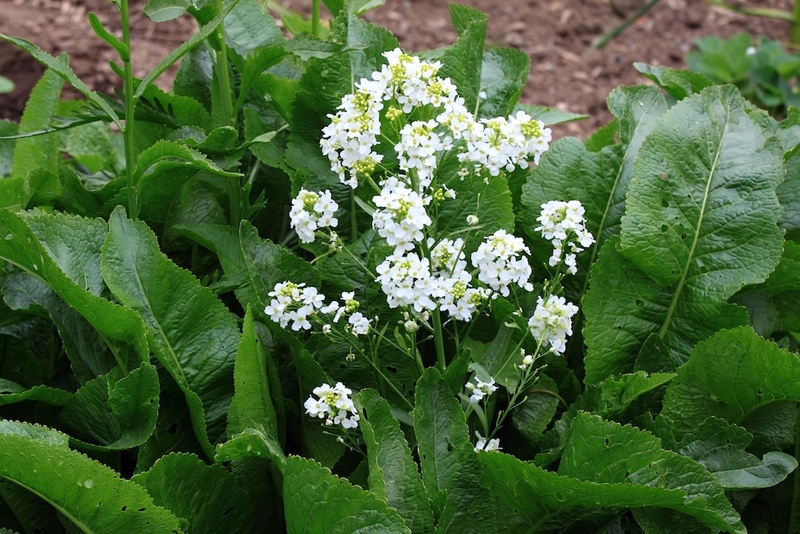 Dorothy Hall, an Australian naturopath, wrote one of my favorite herb books, Creating Your Herbal Profile, where she gives personality and health profiles of people who need certain herbs. Her profile for horseradish suggests the herb is good for “stodgy” people with a narrow, rigid code of behavior. They deprive themselves of emotional variety and experiences. Their diet tends to be bland, overcooked food like the traditional cold beef and boiled cabbage. They may also tend to drink too much.
Dorothy Hall, an Australian naturopath, wrote one of my favorite herb books, Creating Your Herbal Profile, where she gives personality and health profiles of people who need certain herbs. Her profile for horseradish suggests the herb is good for “stodgy” people with a narrow, rigid code of behavior. They deprive themselves of emotional variety and experiences. Their diet tends to be bland, overcooked food like the traditional cold beef and boiled cabbage. They may also tend to drink too much.
Their rigid stoicism allows them no raw emotions or food. Eating only plain, simple food, they have a grim philosophy: “Life isn’t meant to be easy.” They never indulge themselves and suffer from weak digestion that needs some stimulation, just like their life.
Using Horseradish
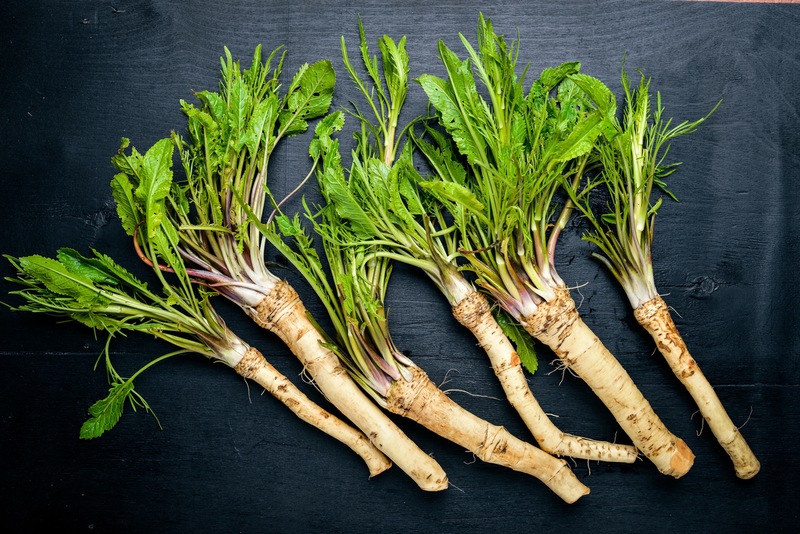 Horseradish is fairly easy to grow and is one of the pungent spices that tolerates a cooler climate. You harvest the first-year roots because they have the most flavor. The roots are harvested in the late fall after the leaves have seen frost. You can sometimes find fresh horseradish roots in grocery stores, as well.
Horseradish is fairly easy to grow and is one of the pungent spices that tolerates a cooler climate. You harvest the first-year roots because they have the most flavor. The roots are harvested in the late fall after the leaves have seen frost. You can sometimes find fresh horseradish roots in grocery stores, as well.
The fresh root has the strongest action. Peel and grate the fresh roots. They can be preserved in vinegar and refrigerated. You can also buy prepared horseradish in the refrigerator section of most grocery stores.
You can also tincture the freshly grated roots in brandy or vodka. Do a 1:5 tincture for two weeks. You can also extract the fresh roots in glycerin or make a syrup with them using honey or brown sugar.
You can dry the roots for later use, but they lose much of their potency. Make a hot tea using the tincture, syrup, or glycerite as a diaphoretic for colds and flu.
Steven's Articles
-

-
The Health Benefits and Problems with Coffee
This popular caffeinated beverage can be beneficial…
October
-

-
Understanding Caffeine & Cellular Adaptation
Preserving the power of caffeine's buzz and the…
September
-

-
Horseradish
A pungent spice for aiding protein metabolism…
-

-
Banaba or Crepe Myrtle
A beautiful tree from Southeast Asia whose leaves…
August
-

-
Monkeyflowers
Flower essences to help see ourselves more clearly…
-

-
Mariposa Lilies
Strengthening the bond between mother and child…
-

-
The Noble Bay Leaf
A common kitchen herb for aiding digestion and…
-

-
Epimedium: Horny Goat Weed
A circulatory stimulant and kidney yang tonic…
July
-

-
The Medicinal and Nutritional Benefits of Apricots
A nutritious fruit and valuable medicinal seed for coughs
-

-
Dogwoods
Asian dogwood is used to stop excessive discharge,…
June
-

-
Neem: The Village Pharmacy
A popular Ayurvedic remedy for dental and immune…
-

-
Spilanthes: The Toothache Plant
A traditional remedy for teeth and gums, as well…
-

-
Forsythia
An anti-inflammatory, fever-reducing, and infection fighting herb
May
-

-
Buckwheat (Kashi)
A delicious, high protein, gluten-free, gut-healthy food
-

-
Leaky Gut Syndrome
Plugging the leaks on the underlying cause of…

